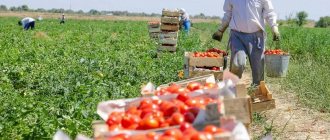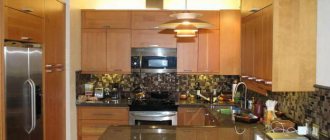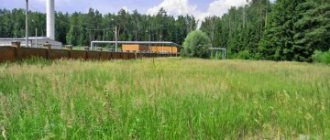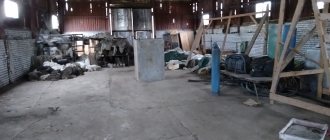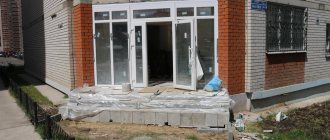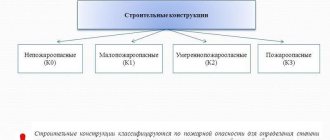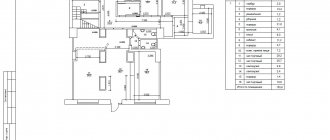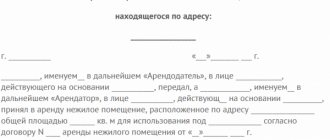Definition and characteristics of a non-residential property
The very name “non-residential” speaks for itself – i.e. such a premises cannot be used for living; accordingly, it can be used for production or public purposes.
There is no clear legal term that gives an answer to the question of what the purpose of non-residential premises is in the current legislation of Russia. However, in accordance with the norms of the Housing and Civil Code, it has a number of distinctive features that allow it to be distinguished from other objects:
- Belongs to real estate, i.e. is an integral part of the building, which indicates its significant difference from the structure.
- It is isolated and has certain boundaries.
- It has a close relationship with the land plot and is located at a specific address.
Purposes of its use
The purposes of using non-residential premises must correspond to the type of activity carried out in it, and can be as follows:
- Communal and household.
- Medical.
- Educational.
- Trading.
- Production.
- Warehouse.
- Office.
- Sports.
- Intended for public catering.
- Free appointment, etc.
EGRN includes a list of information presented in text and graphic form, and consists of: real estate cadastre, register of rights to real estate, register files, register of boundaries, cadastral maps and books of documents (Article 7 of the Federal Law No. 218 of July 13, 2015 .).It is worth noting that the Register stores not only current data, but also previously entered information about real estate objects.
According to functionality, there is a division into:
- Basic.
- Attendants.
- Technical.
- Communication.
- Auxiliary.
Thus, non-residential premises can be used for a variety of purposes, in addition to living in them.
Concepts of direct and functional use
The intended purpose is a mark in the registration documents of non-residential premises, characterizing its status. The intended purpose directly indicates how a specific non-residential area can be used.
Thus, in the design documents of buildings, a note can be made that specific premises should be equipped and used as pharmacies, shops, hairdressers, offices, dental offices, etc. At the same time, they must be equipped in accordance with all sanitary and fire safety standards.
Important! On the one hand, such planning prevents the chaotic development of retail outlets and regulates competition. On the other hand, a non-residential object receives a label, and with it a strict restriction on its further use, which reduces the demand for it significantly.
The functional purpose is inherent in the technical characteristics of the room itself and its change is of a different nature. If the intended purpose can be nominally established in the documents, then the functional purpose is dictated by the location of the object, its decoration, its area, etc., and therefore changing the purpose of such a room is more labor-intensive. This can be explained with an example like this. Premises are rented for the purpose specified by the owner - a cafe. Moreover, among them there should be rooms with a functional purpose - a kitchen.
In this case, the kitchen must comply with all legal requirements. For example, be equipped with appropriate ventilation and finished with suitable tiles. The use of non-residential premises has a wide range. From pharmacies and shops to gyms and medical facilities. Therefore, the requirements for the arrangement of premises vary for each type of use. Thus, you can change the functional purpose, the only question is how to do this with less loss of money and effort.
Purpose of non-residential premises - what is it?
The concept in question does not have a legislative definition, but is only designated in accordance with the order of the Ministry of Economic Development of the Russian Federation No. 943 dated December 16, 2015, which approved the procedure for maintaining the Unified State Register of Real Estate.
The document stipulates a clear division of premises according to their purpose into residential and non-residential. The former can be used exclusively for residence, the latter are divided according to their intended purpose in accordance with the type of permitted use in the Unified State Register of Real Estate.
Attention! Because Non-residential premises have different purposes of use, and therefore the requirements for them are different. This applies to sanitary, fire and other standards. The requirements presented significantly narrow the boundaries of the use of the premises, which is reflected in its purpose.
What is a change in target operation?
Non-residential premises are intended for social, commercial, administrative, cultural, educational and other purposes. The main taboo is the ban on living in it.
Thus, based on the requirements of current legislation, accommodation is not intended use. There is another type of misuse. These are cases when the owner of the leased property indicates the intended use in the agreement.
If, according to the contract, the tenant took the buildings for a warehouse and set up a beauty salon there, then this operation will also be classified as not intended for its intended purpose. There is no specific article that would establish the limit and responsibility for its use for other purposes, either in the Criminal Code of the Russian Federation or in the Code of Administrative Offenses of the Russian Federation. The only obstacle to misuse is the specific requirements for each type of non-residential building.
These requirements are detailed in GOSTs and Codes of Practice. For example, GOST R EN 13779-2007 “Ventilation in non-residential buildings. Technical requirements for building ventilation and air conditioning systems”, GOST 30494-2011 “Residential and public buildings. Indoor microclimate parameters"; SP 158.13330.2014 “Buildings and premises of medical organizations. Design Rules"; SP 2.13130.2012 “Fire protection systems. Ensuring the fire resistance of protected objects.”
Improper use - liability
Using non-residential premises for other purposes is fraught with administrative liability , and therefore, both legally and in fact, one must adhere to all legal requirements and norms.
In addition, Art. 15 of the Housing Code of the Russian Federation contains a number of requirements that a residential premises must meet, and, therefore, if they are violated, living in it is prohibited, it is automatically recognized as non-residential.
There is currently no direct liability for living in a building that does not meet the requirements of the law. But there are penalties regarding non-compliance with SES standards : noise level, layout, occupied space, lighting, etc.
In monetary terms, ordinary citizens face a fine of 500-1000 rubles, officials and individual entrepreneurs will have to pay 1000-2000 rubles, and legal entities - 10,000-20,000 rubles. Entrepreneurs also face suspension of activities for up to 90 days, and legal entities. persons for a period of up to three months (Article 6.4 of the Code of Administrative Offenses of the Russian Federation).
The essence of imposing fines is not punishment as such, but the protection of the life and health of the citizens themselves, because staying in a facility that does not meet the requirements is not at all safe .
What it is?
A non-residential building is a building that is not intended for human habitation. Although the legislation of the Russian Federation does not contain the concept of this object, it establishes the main features by which it can be identified.
So, according to Art. 15 of the RF Housing Code for non-residential premises is characterized by the following:
- It must relate to real estate.
- It must be insulated (the means of insulation in this case are the integral parts of each room: ceiling, walls and floor; an equipped entrance/exit is required).
- Must be suitable for habitation.
What is this “free-use premises”? This concept is used in commercial slang. You will not find it in any law or in any official document. It appears very often in advertisements. It refers to small buildings or parts thereof that are not intended for habitation. Their goal is to equip a cafe, or a store, or an office, or a warehouse, and so on.
Important! The main thing is that the registration documents include a note that the premises belong to the non-residential property.
With this status, the advertiser wants to convey to potential clients that the purpose of the premises is not defined, and therefore the latter have greater freedom in its use. There are plenty of options for using a free space. However, they should not be considered universal.
Once it reaches a specific goal, a lot of nuances will emerge that require redevelopment, additional approvals, and re-issuance of documents.
Definition of concepts among such objects
Free status
A non-residential property can be given the status of a free-use premises, which allows it to be used in various fields of activity. Such an object can be repurposed at any convenient time if necessary, which significantly saves the owner’s time and money. Most often, vacant premises are intended for rent, and therefore a change in purpose occurs much more often than usual. They are used for offices, hairdressers, shops.
Free-use premises, contrary to their status, cannot be used for all areas of activity . In some situations, additional permits will be required.
Reference. The cost of free-use objects is significantly higher than similar options indicating a specific purpose.
Residential status
A change in the purpose of using a room in a building is not a reason for reconstructing the building itself. This is where the concept of non-residential premises with a residential purpose arose. Consequently, the building may be non-residential, but the premises located in it are suitable for habitation.
Thus, the main task of the owner is to go through the procedure for making adjustments in a timely manner, which we will discuss further.
The procedure for changing the target functional purpose
, as well as the tenant with prior agreement with him, have the right to change the intended purpose To learn how to change the purpose of non-residential premises, it is important to study the step-by-step algorithm of actions. Changes can be made in two ways:
- By transferring to residential premises (in accordance with Chapter 3 of the Housing Code of the Russian Federation).
- By changing the type of activity for which it was intended.
This procedure is quite complex and consists of a number of steps:
- Preparation of the project and its approval by all supervisory services (SES, Vodokanal, Ministry of Emergency Situations, etc.).
- Collecting documents and submitting them to local authorities.
- Carrying out construction and other work in accordance with the approved project and putting the building into operation.
- Registration of a technical passport at the BTI.
- Obtaining a new cadastral passport and registering a certificate of ownership in the unified USRN database.
Which authorities should I contact?
To determine which authorities will be required to obtain permits, you need to find out what the object was used for.
Any type of activity requires compliance with fire and sanitary-epidemiological standards. Therefore, the applicant needs to coordinate his intentions with the district fire inspection department and Rospotrebnadzor.
The owner will need to contact the BTI to obtain plans of the premises located above and below the object in question. The result will be the receipt of an agreement signed by representatives of all authorities, the main one of which will be the local administration.
Project preparation
Before drawing up a project, it is necessary to consider a number of important points:
- Condition of load-bearing walls and floors.
- Correct wiring.
- Condition of the water supply system.
- Possibility of redevelopment in the selected building.
After the preliminary examination, you can begin to draw up a project, which may include additional parameters:
- Ventilation system.
- Facade decoration.
- Water supply and heating system.
- Other design solutions.
The results of the design work should be agreed upon with the following services in the specified order:
- Housing inspection.
- Fire supervision.
- SES.
- Expert Bureau.
- Department of Architecture (if it is planned to change the facade of the building).
List of documents
To repurpose non-residential premises, the following documents will be required:
- Application from the owner of the premises.
- Documents confirming the legality of ownership.
- Explication.
- Technical plan.
- Redevelopment project.
- Certificates from the BTI about inventory value and technical condition.
- Certificate of timely payment of utilities.
Getting permission
Self-government bodies of a constituent entity of the Russian Federation study the submitted package of papers within 6 days and make a decision to change the purposes of its use. If the result of the review is positive, the owner receives a permit with an unlimited validity period. If there are violations, they are given a 10-day period to eliminate them and the opportunity to re-apply.
Cost of the procedure
The costs will consist of several parts:
- Project preparation.
- Payment for housing inspection services.
- Payment for redevelopment.
- State duties.
The amount of costs will depend on the region . For example, the cost of the procedure in Moscow and the region will be expressed in the following amounts:
- For the preparation of a technical report you will have to pay about 25 thousand rubles.
- Drawing up a building project will cost approximately 130 thousand rubles.
- BTI services will cost 60 thousand rubles.
- Architectural work – 30 thousand rubles.
- The final adjustments will be 45 thousand rubles.
In remote regions, the price may differ significantly, and the total cost will be only 60-70 thousand rubles.
Deadlines
Typically, the preparation of a technical report takes 1-2 business days. However, the concept of deadlines in this procedure is a relative concept:
- Drawing up an architectural plan may take up to 14 days.
- Preparation of certificates from the BTI will take 10-30 days.
- It will take about 30 days to receive a cadastral passport with the adjustments made.
Thus, if the project is complex, the duration of work will be about 2 months.
The final stage
The final stage is obtaining a cadastral passport with an updated layout and registering a new certificate of ownership. The cadastral plan of the premises can be changed on a technical basis. At the same time, the time frame for making amendments varies from 3 to 18 days and depends on the complexity of the work being carried out.
So, the purpose of non-residential premises plays a decisive role in the possibility of its operation. The owner may be held liable for illegal use, and therefore his main task is to make timely adjustments if a change of activity is planned. This procedure is quite labor-intensive and requires not only time, but also financial costs. However, by following the scheme given in the article, you can avoid problems in the future.
Brief historical information about the settlements of the Akhtanizovsky rural settlement
The Akhtanizovskoye rural settlement is located in the northern part of the Temryuk region, its territory is washed by the Azov Sea in the north and the Akhtanizovsky estuary in the east.
The climate is temperate continental, mild and short winters, but in some years it can be severe. Summer is dry, long, and very hot.
There are three settlements on the territory of the Akhtanizovsky rural settlement: the village of Akhtanizovskaya, the villages of Persyp and Za Rodinu, located on the coast of the Azov Sea.
The administration of the Akhtanizovsky rural settlement is located in the village of Akhtanizovskaya.
Full history of the Akhtanizovsky rural settlement:
Chapter I. From the history of settlements of the Akhtanizovsky rural settlement
1.1 From the history of the village of Akhtanizovskaya
Akhtanizovskaya is one of the first Cossack settlements, founded in 1794. Black Sea residents who arrived in Kuban. It was named after the name of the estuary “Agdeniz” - the village of Agdenizovsky. The name of the estuary comes from the Turkish word “Agdeniz”, which means “White Sea”.
But there is another version of the name of the village. The Cossacks, driving through our places, climbed a local landmark - Mount Blevaku, and saw a magnificent picture! Below, like a large blue dish, lay the estuary, and near the very shore there was a village, all in flowering gardens. The combination of white and blue amazed the Cossacks so much that they exclaimed: “Oh, there’s the bottom!” Over time, the name of the village “Agdenizovsky” changed to “Akhtanizovsky”.
A.P. Obabko, who compiled a historical certificate in 1912, attributed the founding of the village to 1812, but in the Geographical and Statistical Dictionary of the Russian Empire, published in St. Petersburg in 1863 (compiled by P. Semenov) it was written:
“Akhtanizovskaya village of the land of the Black Sea army (now Kuban region) of the Taman district, is located on the northwestern tip of the estuary of the same name, 3 versts in the southeast of the Sea of Azov, almost 40 versts from Taman and 20 versts from Temryuk , is located on the site of the ancient Greek city of Kenos, the village was founded in 1794.”
Thus, it was established that the village was founded in 1794.
In 1840, the village began to be called a village. At first, the population of the village of Akhtanizovskaya was small, consisting of former Cossacks who fled to Turkey during the destruction of the Zaporozhye Sich and after some time returned to the Black Sea region.
The military authorities first of all obtained permission to build the church, although this required the consent of the Catherine's Ecclesiastical Consistory. On February 8, 1817, permission was given to residents of the village of Agdenizovsky to build the Church of St. Boris and Gleb. But they started talking about building a school only 45 years later. The first school, which was built in 1863, was sheltered in a Cossack hut. For many years there was no medical care in the village, although the residents often suffered from fever, did not take any medicine, but gradually recovered. Witchcraft flourished.
Directly by the end of the 90s of the 19th century, the population in terms of size and literacy looked as follows: the total number of families - 408 (of which 317 were Cossacks); including 1210 men, 1184 women. Of the 408 families, 231 had literate family members (mostly men were literate, and only 13 women could read and write).
In the village, the economy was divided into the following sectors:
agriculture - 347;
fishing - 9;
other- 18.
Initially it was believed that our village was founded in 1812, so in 1912 the village celebrated its 100th anniversary. The village leaders built a modest monument in the center of the village, on the marble plaque of which there are the following words: “To grandfathers and great-grandfathers from grateful posterity.” Alexey Petrovich Obabko wrote a historical brochure for this anniversary, “Stanitsa Akhtanizovskaya 1812 - 1912,” which was published in a circulation of about 1000 copies and distributed free of charge to every household.
A monument built in honor of the 100th anniversary of the village of Akhtanizovskaya.
The main source of citizens' well-being was land; before the revolution, only Cossacks who had reached the age of 17 were allocated arable land. Life in the village of Akhtanizovskaya passed slowly. Every year in January the village saw off the next batch of young Cossacks for military service.
The news of the February revolution came to Akhtanizovskaya a little after it happened. On March 25, 1917, the last village ataman, Nikolai Guly, was deposed, who later turned out to be an active participant in the counter-revolutionary uprising. An executive civil committee was organized in the village.
In October 1917, the Bolsheviks led by Lenin won. But Soviet power was established in Kuban with great difficulties. This was explained by the high proportion of the Cossacks, who for many centuries were the support of the autocracy.
On January 25, 1918, the First Taman Regional Revolutionary Congress took place, which wrote in its resolution: “Soviet power is the only legitimate power and all its decisions are binding on the population...”
The first military revolutionary committee was created in the village, headed by Ilya Mitrofanovich Streblyansky. Resistance to the counter-revolution in the village of Akhtanizovskaya in the summer of 1918 was especially fierce. When the whites came to the village, reprisals followed against supporters of Soviet power. Many went to the city of Temryuk, some fled to the floodplains. THEM. Streblyansky was tortured and drowned by the whites in a well.
In 1920, having overcome all difficulties and defeated the counter-revolutionary detachments, Soviet power was finally established in Kuban. The population of the region began restoration work. In April 1920, a body of Soviet power was created in the village of Akhtanizovskaya - the village revolutionary committee; until 1920 there were no party members in the village; G. N. Baturin became the first Bolshevik of the village (later one of the streets was named after him).
Back in the summer of 1920, the first party cell was created in the village under the leadership of A.D. Koba, consisting of five people, and in December 1922, a Komsomol cell of six people was created.
The pioneer organization arose shortly after the birth of the Komsomol cell, in December 1924, there were 34 boys and 24 girls in it.
In 1920, agricultural artels “Smelaya” and “Proletarskaya” were created on the territory of the village on the former estates of landowners. Both artels had 400 hectares of land; 200 people worked in the artels.
In 1922, another artel named after V.I. Lenin arose. The first partnership for joint cultivation of land arose in 1925; in 1923 there were already 9 TOZs.
As you know, in January 1931, the Central Committee of the Communist Party adopted a resolution “On the collectivization of agriculture in the North Caucasus.” Collectivization in the village of Akhtanizovskaya proceeded at a slow pace (according to February 1931, collectivized farms in the village of Vyshesteblievskaya were 75.5%, Golubitskaya - 77%, Zaporozhskaya - 89%, and in the village of Akhtanizovskaya only 50%).
In the 1930s, the first collective farm “named after. Comrade I.V. Stalin" (comrade Kondratov became the chairman). At this time, seeking raw material resources for the developing industry, cultivation of unirrigated cotton was practiced in Taman. Hence, in the newly emerged collective farm, along with grain crops, cotton growing was one of the main industries. Cotton grafting in the village was slow and difficult (for example, in 1931, only 2% of cotton was weeded, i.e., out of 1022 hectares, 45 hectares were processed).
In 1935, the collective farm named after. Comrade I.V. Stalin" was divided into three collective farms:
1.Collective farm named after. I.V. Stalin" chairman A.P. Chernomorets.
2.Collective farm named after. Voroshilov" chairman F. M. Tregubenko.
3. Collective farm “Red Dawn” (on the Soleny farm), chairman A. T. Nesterenko.
On June 22, 1941, the Great Patriotic War began. On September 2, 1942, the Germans captured the station. Akhtanizovskaya. Hard times have come for the population of the village. The Germans deported the youth of the village to forced labor in Germany; many village residents were killed by the Germans in the village itself on suspicion of loyalty to Soviet power. The collective farms of the village were completely destroyed by the Germans.
Our village was liberated from the Nazi invaders during the night assault by Soviet troops on October 7, 1943.
A difficult period of restoration of the destroyed collective farm begins. Already in 1946, the collective farm named after. I.V. Stalin" fulfilled the livestock production plan by 117%.
On September 30, 1957, the Secretary of the CPSU Central Committee N.S. Khrushchev, while staying in Taman, visited our village, after which, with his light hand, Taman was declared “Soviet Champagne”. From that moment on, vineyard plantations turned green on the collective farm fields.
Meeting of residents of the village of Akhtanizovskaya with N.S. Khrushchev. on Krasnaya street. Photo 1957
In a conversation with old-timers, she recalled the defeat of the White Guards in the Kuban: “After all, comrades, in the ranks of the Red Army in the 20s, I walked the entire Kuban on foot from Rostov-on-Don to Akhtanizovskaya.”
The changes also affected the public utilities environment. In the 1950s, 40 km of power lines were laid in the village, a water supply system was built, and an asphalt road was laid. In 1964, gas cylinders appeared in many homes (previously food was cooked using kerosene gases)
In 1959, two collective farms named after Stalin and named after Voroshilov merged, and the Rossiya state farm was formed. Subsequently, our state farm was renamed into the Akhtanizovsky wine state farm. In 1974 - 75 A winery was attached to the state farm. The farms grew, and in January 1976, the Lazurny wine state farm was separated from the Akhtanizovsky wine state farm, whose office was located in the village of Za Rodinu.
In 1972, on the territory of the Akhtanizovsky rural settlement, an expedition led by N.I. Sokolsky discovered the Taman Tholos, an archeological monument of the second quarter of the 3rd - mid-2nd centuries BC. 1.5 km from the Sea of Azov and 0.5 km from the southwestern outskirts of the village of Za Rodinu.
The country's transition to market relations and the collapse of the USSR contributed to changes in the life of our country. The changes also affected the Akhtanizovskoye rural settlement.
In 2000, a church was opened in the village, which had not existed before.
In the church of the village of Akhtanizovskaya.
In the center is the rector of the Borisoglebsk parish, Father Mikhail.
In May 2002, the municipal enterprise “Bytservis” was created. In 2002, bus stops were built along the Temryuk-Akhtanizovskaya highway, and the Temryuk-Akhtanizovskaya minibus runs regularly.
Peresyp is a small village on the coast of the Azov Sea, which is rapidly turning into a resort.
The village of Peresyp was founded as a postal station on the Tamansky Shlyakh (postal road between Yekaterinodar and Taman).
The name of this village comes from the combination of the words “pour sand.” During strong winds and rains, sea sand clogged the previously narrow channel from the Sea of Azov into the Akhtanizovsky estuary. And the fishermen residents manually cleared the canal of sand (hence the name of the village of Peresyp).
The village of Za Rodinu is a small village where the descendants of the Nekrasov Cossacks live.
Chapter II. Geographical and natural features of the Akhtanizovsky rural settlement, characteristic flora and fauna.
The Akhtanizovskoye rural settlement has unique natural and climatic conditions and historical and cultural objects.
The village of Akhtanizovskaya is located along the northwestern coast of the Akhtanizovsky estuary. Its southern outskirts are closely adjacent to the Akhtanizovskaya hill and stretch along the Khimki floodplain towards Mount Borisoglebskaya.
The Taman Peninsula has long been called a peninsula of volcanoes, but only mud volcanoes. There are about thirty of them. There are several mud volcanoes on the territory of the Akhtanizovskoye rural settlement: Akhtanizovskaya Blevaka, Mount Borisoglebskaya, Mount Tsymbaly volcanoes and Tizdar volcano.
The main attraction of our village is Akhtanizovskaya Blevaka.
Akhtanizovskaya Blevaka reaches a height of 67 meters above sea level. The base of the hill is a dome-shaped rise of dark gray fossilized limestones of the Sarmatian stage and Cimmerian clays. A cone consisting of bluish-gray clay is set on the dome of a small fold.
More recently, this volcano was in constant activity. Gray tongues of clay lava are visible on its slopes. From the mouth of a hill the diameter of a large plate, at first a deep sigh was heard, then a dark gray liquid mass slightly smelling of hydrogen sulfide was pushed to the surface and slowly began to flow down the already laid channel, filling the depressions and freezing there. After some time, the volcano seemed to sigh again and spit out another portion of the mash cooked in the depths. The volcano acted rhythmically.
Currently, the activity of the volcano has weakened, and where the crater was, a dry crater with a diameter of about 1.5 meters and a depth of up to 1 meter has formed. But from time to time, new salsas form next to the old crater and portions of gray mud pour out of them. The top of the hill is covered with a layer of dried, cracked gray breccia.
Mount Borisoglebskaya (Boris and Gleb)
It was probably named in memory of princes Boris and Gleb, whose icons were found in the remains of the destroyed temple.
The height of the hill is 64.7 m above sea level. Located in the western part of the Bolshoi Akhtanizovsky Estuary. Some of its points are at an altitude of 21.7 (in the northern part towards the highway), while others gently descend to the estuary (13 m).
In 1998, an active landslide process began on the hill from the Akhtanizovsky estuary.
Boris and Gleb Hill is of volcanic origin. There has been no release of dirt in recent years, but in some places there has been a release of gases.
Tsymbaly Hill
If you look from the side of the highway, the hill is a continuation of the Akhtanizovskaya hill. Its peaks have a height of 107.7 m and 114.2 m above sea level.
Tsymbaly Western and Tsymbaly Vostochny and Akhtanizovskaya Sopka form a common hill, extended in a north-east direction for 6.5 km. This ridge with rather steep slopes approaches the highway near the village of Zaporozhskaya. A powerful eruption of the Western Tsymbaly volcano was recorded in the first half of the 19th century, when a tongue of volcanic mud reached 300 m. On Eastern Tsymbaly, the volcano breccia is saturated with oil. (Shnyukov, 1986).
Currently (in 2002), the Abyss volcano in Western Tsymbaly is “speaking.” The first shock and movement of the mud avalanche was noticed by local residents on February 13. Within a week, its crater reached a diameter of 280 meters, and the length of the mud flow was 700 m. What was happening was recorded by specialists from the Azov branch of the State Unitary Enterprise “Kubangeology” (director I.N. Gusakov).
The eruption continued in March 2002. Two craters with an area of 50 m2 each, the total area of squeezed out clay is 300 m2, then landslides continued after the rains. Two power transmission towers fell (G. Kolotilov, head of the detachment of the Azov branch of the State Unitary Enterprise “Kubangeology”), which the region’s power engineers managed to quickly restore.
The clay flow in its movement and frozen state resembles a lava flow. The products of the eruption are a mixture of clay masses, rock fragments, formation waters, hydrocarbon gases with the smell of oil and even its admixtures.
The translation and origin of the name “Tsymbaly” is unknown. The Black Sea Cossacks named this hill Tsymbalov Ridge.
Currently, the volcano looks like this: huge shafts of frozen breccia, dark soil interspersed with light layered rock, possibly carbonates. On the mounds of soil among the torn up dead rock, seedlings of cereals and tragus saltwort are making their way. Salt crystals are clearly visible on some steep walls.
Paleontological finds on Tsymbaly open pages of the history of the habitation of ancient animals on this land. Thus, bones of panthers, Taman beaver, Trigonatherium beaver, Phanagorian elephant, Etruscan rhinoceros, Sussenbor horse, camel, compound horned deer, giant deer, Taman fawn elk, gazelle, forest antelope, short-legged bison were found on Tsimbaly (Burchak-Abramovich, Flyagin, 1990).
On the slopes of Tsymbal, Borisoglebskaya Mountain, and Akhtanizovskaya Hill, the soil is clayey, mostly solonetzic. Here you can find the usual vegetation of the Taman steppes: cereals (Aegilops cylindrical, timothy, bromegrass, maned barley, fescue, feather grass), legumes (several types of chin), asteraceae (kozel, yarrow, etc.) and other plants. In Eastern Tsymbaly, yarrow with yellow flowers and other interesting species of Taman flora are found. Of particular interest are steppe ephemerals (forget-me-nots, spring flowers, valerian, pansies, stars) and ephemeroids (Bibirshtein's tulman, tuberous valerian, muscari racemosus, onions, Sarmatian belvalia).
In summer, the slopes of Tsymbal and Borisoglebskaya Mountains are covered with cereals and herbs. Purple sage inflorescences, pink-blue inflorescences covered with prickly hairs, blue chicory inflorescences, amber flowers of St. John's wort, low clumps of thyme. In the air is the aroma of flowering plants, the hum of bees and bumblebees, busily examining the flowers in search of nectar and pollen.
Licorice, seaside eryngium, katran, astragalus, alfalfa, and timothy grow on the sandy shores of the Azov Sea. On the Wild Beach you can find thickets of trees and shrubs, among which are hawthorn, wild pear, dogwood, rose hips, blackberries, and thorns.
The fauna is quite diverse. Of the invertebrates, the insects listed in the Red Book of the Krasnodar Territory are of greatest interest (carpenter bee, purple xylocopa, clay bumblebee, podalirium, swallowtail, hawk moth (death's head).
The Akhtanizovsky Estuary is home to semi-anadromous fish (pike perch, ram, bream), freshwater fish (carp, pike and others).
Amphibians: lake frog, green and gray toad, common tree frog.
Reptiles: common and water snakes, steppe viper, yellow-bellied and four-striped snakes, marsh turtle. Birds and mammals are the most diverse group of animals. There are especially many waterfowl (seagulls, ducks, geese). Birds of swamps and shores of water bodies (great and little egrets, gray heron, great grebes, waterhen, bittern and others). In the reed thickets there are wild boars, foxes, and also muskrat, imported from North America. The surviving animal species of the steppe zone include the common vole, ground squirrels, mouse mice, field mice, mole rats, brown hare, hedgehogs, moles, jerboas and weasels. Birds include rooks, larks, quails, and gray partridges.
Akhtanizovsky Estuary is the largest freshwater body of water in the Krasnodar Territory. Its area is 94 km2, the greatest depth is 1.6 m. Akhtaniz is surrounded from the south by the Starotitarovskaya Upland, cut by numerous gullies and ravines, and Mount Borisoglebskaya rises in the west. In the north rises the Golubitsky outlier, the slopes of which rise like a steep wall to the estuary.
Now the shores of the estuary are a world of reed grass, unafraid birds, and the delicate aroma of pink lotus. The land of mosquito songs, a haven for ducks, coots, grebes nesting in reed thickets, and a spawning ground for pike perch. Here it is - a concert hall for evening performances of tenors - mosquitoes and a polyphonic choir of frogs. Here the white and yellow egg pods lower their graceful petals onto the water and send their inheritance to the bottom - prickly seed balls - water chestnut - chilim. On the reed hummocks in the open sunny space there were seagulls, and in the thickets, in self-built huts made of reeds up to one meter above the water, there was a muskrat. Sometimes a fox or a hare appears on the shore of the estuary, and very rarely - an unsociable wild boar, choosing the most remote habitats for its family.
In the Akhtanizovsky estuary, located on the territory of the Temryuk region, the lotus was planted by human hands, artificially, but in warm fresh water, in shallow water it found a fertile environment for growth and flowering. And now the Lotus Valley is one of the local attractions that the locals are proud of.
Valley of Lotuses in the Akhtanizovsky Estuary.
Volcano Tizdar. In Sinyaya Balka, next to a brick factory, not far from the village of Za Rodinu on the slope of Mount Tizdar, there is a mud volcano, which is sometimes called Sinyaya Balka or Tizdar. Mount Tizdar juts out like a small hill into the Sea of Azov. In exposed areas of the mountain, layers of clay of various colors are visible. Blue clay flows onto the seashore and, when dried, becomes gray, just like the mud of a volcano. The Tizdar mud volcano has a crater with a diameter of 15-20 meters with liquid mud. Diving into mud is not only beneficial for our body, but also a very fun activity.
Swimming in Tizdar

